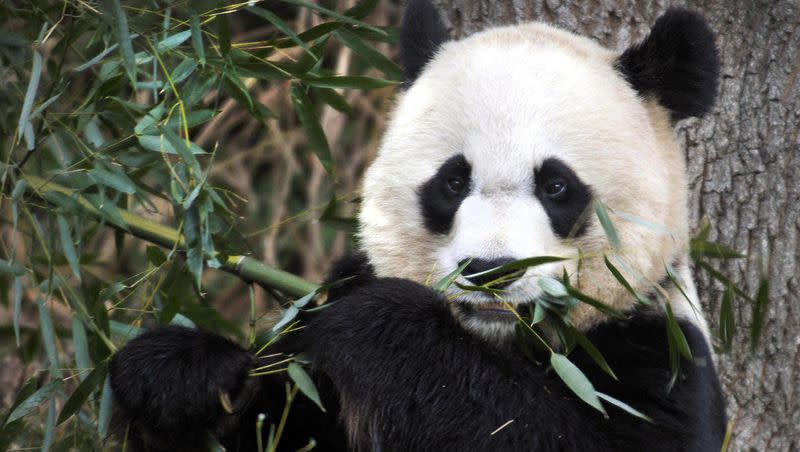San Diego Zoo set to receive a pair of new pandas from China

- Oops!Something went wrong.Please try again later.
China’s government has plans to send two giant pandas to the San Diego Zoo, a symbol of softening U.S.-China relations.
“Pandas have long been envoys of friendship between the Chinese and American peoples,” Chinese leader Xi Jinping said during a visit to San Francisco in November. “We are ready to continue our cooperation with the United States on panda conservation, and do our best to meet the wishes of the Californians so as to deepen the friendly ties between our two peoples.”
A spokesperson for the San Diego Zoo Wildlife Alliance told CNN they are “optimistic we will get pandas in the not-so-distant future.” A timeline for the panda’s arrival has not been revealed.
Bai Yun, a panda born in captivity in China, lived at the San Diego Zoo for 20 years and gave birth to six cubs there. In 2019, Bai Yun and her son were sent back to China, per Fox 5 San Diego.
“We are humbled by the potential opportunity of continuing our collaborative conservation efforts to secure the future for giant pandas. As such, San Diego Zoo Wildlife Alliance is taking important steps to ensure we are prepared for a potential return,” said Megan Owen, vice president of conservation science, per a press release.
For more than five decades, pandas have served as a symbol of U.S.-China relations.
During President Richard Nixon’s 1972 visit to communist China, the government of Mao Zedong gifted first lady Pat Nixon with two giant pandas.
“On behalf of the people of the United States, I am pleased to be here and accept the precious gift of the panda — pandas,” Pat Nixon said at the time, per The New York Times.
Related
In 1982, China put an end to gifting pandas. Instead, the U.S. could lease a panda bear from China for an annual fee of roughly $1 million a piece, reports Fox News. Leases typically last 10 years and, with China’s permission, can be extended.
Amid deteriorating relations between China and the West, the Chinese government barred panda lease extensions in the U.S. and the U.K. Receiving the privilege of pandas is dependent on maintaining friendly relations with China.
“China now requires countries that have been given the privilege of hosting pandas to be friendly to China, and if they’re not doing so sufficiently, then pandas will be withdrawn,” Steve Tsang, director of the China Institute at the School of Oriental and African Studies in London, said in an email to The Washington Post in September.
Smithsonian National Zoo in Washington, D.C., sent its three pandas back to China in December when a decades-long loan agreement expired. The Atlanta Zoo’s four pandas are slated to return to China by the end of the year. After 20 years at the Memphis Zoo, pandas Ya Ya and Le Le were sent back to China in April, as reported by the Deseret News.
Panda loans in the U.K. were also severed. After 12 years at the Edinburgh Zoo, pandas Yang Guang and Tian Tian returned to China in December.
In addition to San Diego, China is currently negotiating panda leases with the National Zoo in Washington, D.C., and the Schönbrunn Zoo in Vienna, Austria, per The New York Times.
Despite overcoming extinction status, pandas remain a vulnerable species. There just over 1,800 pandas in the world, according to the World Wildlife Foundation. Pandas require delicate care. They must eat around 26 to 84 pounds of fresh bamboo everyday and live in temperate climates.
The San Diego Zoo is prepared to team up with China to create a future where pandas can thrive.
“Pandas in our care and in the care of Chinese colleagues at conservation facilities play an important role as assurance against extinction and loss of genetic diversity in their native habitats, as well as a source population for reintroductions,” said Owen, per a San Diego Zoo press release.
“Our partnership over the decades has served as a powerful example of how — when we work together — we can achieve what was once thought to be impossible. San Diego Zoo Wildlife Alliance is uniquely positioned to collaborate toward a shared goal of creating a sustainable future for giant pandas.”

